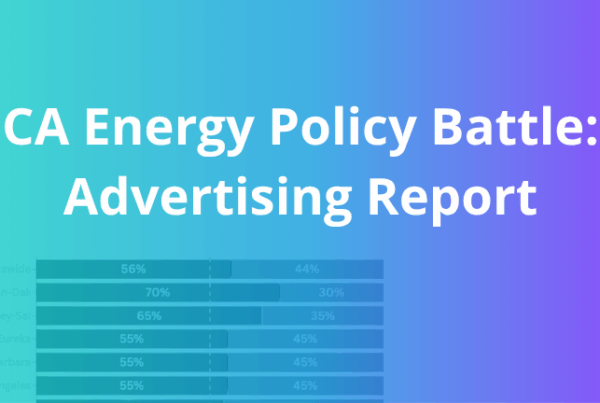We are just four weeks away from Election Day 2025, and the race to watch is California’s Proposition 50. As both sides flood the airwaves in the final stretch, this ballot measure could reshape California’s congressional map and have major implications in who controls the House majority in 2026 and beyond.
Let’s take a look at how the race has shaped up so far.
Question 1: How do likely voters in CA consume media?
- Exclusively on Linear TV: 22%
- Exclusively on Ad-Supported CTV: 29%
- Both: 34%
- Unreachable: 15%
Remember for later:
- Heavy linear TV Viewers: 23%
- Light linear TV Viewers: 32%
- Not reachable on Linear TV: 44%

Question 2: How much has been spent on advertising for CA Prop 50?
From 9/1 – 9/30, both sides have combined to spend $47.9M on advertising, with YES on Prop 50 having outspent NO by 20%.
TV vs Digital splits:
- YES: 39/61 TV-to-Digital split
- NO: 56/44 TV-to-Digital split

Question 3: How has linear TV reached likely voters in CA?
Through all of September, both sides have only reached 39% of likely CA voters with linear TV advertising. They are both averaging around 30% reach to likely voters each week with a slight edge to side NO.
NO on Prop 50 has also delivered 52% more frequency from their linear TV ads.

Question 4: How has linear TV frequency differed by market?
California has 15 media markets and a population of over 39M people which makes it hard for even the deepest pockets to simply buy everything available on TV. In CA, more so than other states, we see strategy play out in which markets advertisers choose to focus on.
- NO on Prop 50 has focused on 5 markets while waterfalling the priority:
SAC > SF > SD > LA > SB - YES on Prop 50 has a more even approach, delivering a similar frequency (22-25) in the top 4 markets, while also out-delivering NO in Bakersfield, Palm Springs, and Chico-Redding.

Question 5: Is linear TV ad frequency distributed evenly among likely voters?
Quick Answer: No
Long Answer: Combining ads from both sides, 40% of likely voters have been reached, seeing an average of 52 ads. But not everyone is hit the same.
- Heavy TV Viewers – 79% have been reached with an avg freq of 85
- Light TV Viewers – 68% have been reached with an avg freq of 22
- Non TV Viewers naturally haven’t seen any ads on linear TV.






